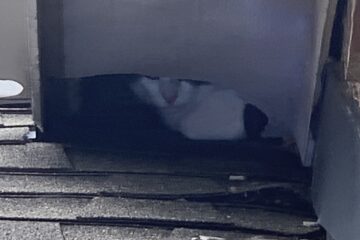Weather changes can have a significant impact on rodent activity patterns. Rodents are highly adaptable creatures that adjust their behaviors and habits in response to environmental conditions. Understanding how weather changes can affect rodent activity is important in monitoring and addressing potential infestations. In this article, we will explore the ways in which weather changes can influence rodent behavior.
- Seasonal Migration:
Rodents, such as mice and rats, may exhibit seasonal migration in response to changing weather conditions. As temperatures drop during the colder months, rodents seek warmer environments, including the interior of homes and buildings. They can enter through small openings and gaps in search of shelter, food, and nesting sites. The presence of rodents indoors tends to increase during the colder seasons as they seek refuge from the harsh weather outside.
- Breeding Patterns:
Weather changes can influence rodent breeding patterns. Warmer temperatures and increased food availability, commonly associated with spring and summer, can stimulate breeding activity among rodents. As a result, their populations may grow rapidly during these seasons. It is important to be vigilant during warmer months and take preventive measures to reduce the likelihood of rodent infestations.
- Food Availability:
Weather changes can impact the availability of natural food sources for rodents. For example, heavy rains or extreme temperatures can damage or destroy crops, reducing the rodents’ access to their usual food supply. In such cases, rodents may be more likely to venture into human habitats in search of alternative food sources, making homes and buildings more susceptible to infestation.
- Nesting Sites:
Rodents seek sheltered nesting sites to protect themselves from the elements. Weather changes, such as heavy rain, snow, or extreme heat, can disrupt their existing nests or make outdoor nesting sites less desirable. As a result, rodents may seek refuge indoors, utilizing attics, basements, wall voids, or crawl spaces as alternative nesting locations. It is important to seal any potential entry points to prevent rodents from entering your home during these times.
- Activity Patterns:
Rodents are typically more active during certain times of the day or night. However, weather changes can affect their activity patterns. For example, during extremely hot or cold weather, rodents may adjust their activity to avoid exposure to extreme temperatures. They may become more active during dawn and dusk when the temperatures are milder. Understanding their adjusted activity patterns can help in setting up traps or implementing control measures effectively.
- Rodent Behavior:
Weather changes can also influence rodent behavior in terms of exploration and foraging. During adverse weather conditions, rodents may venture out of their usual habitats in search of shelter, water, or food. They may be more likely to explore new areas, including homes and buildings, increasing the risk of infestation.
Weather changes can significantly impact rodent activity, migration, breeding patterns, food availability, nesting sites, and behavior. By being aware of these influences, homeowners can be proactive in monitoring and preventing rodent infestations. Taking preventive measures, such as sealing entry points, maintaining cleanliness, and implementing rodent control strategies, can help minimize the risk of rodents seeking shelter and causing damage to your property. Additionally, seeking professional assistance from Red Rover Rodent Removal can provide expert guidance and effective solutions tailored to the specific challenges posed by weather-related rodent activity.




